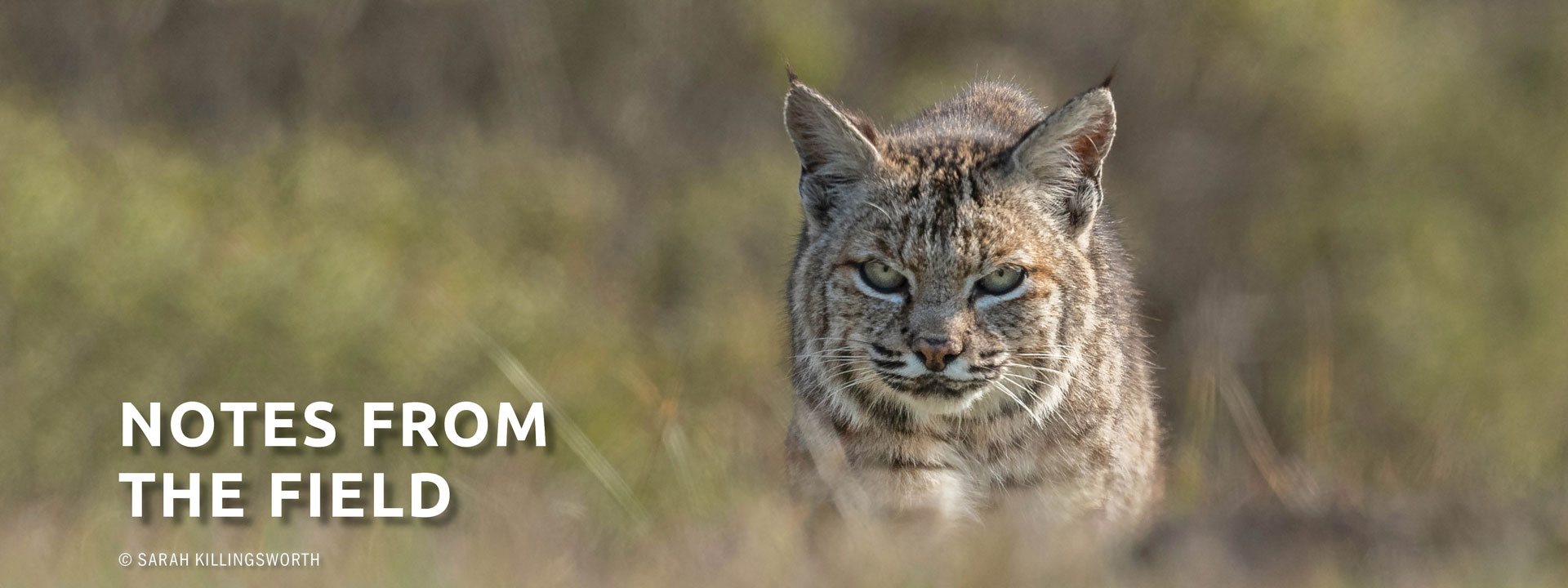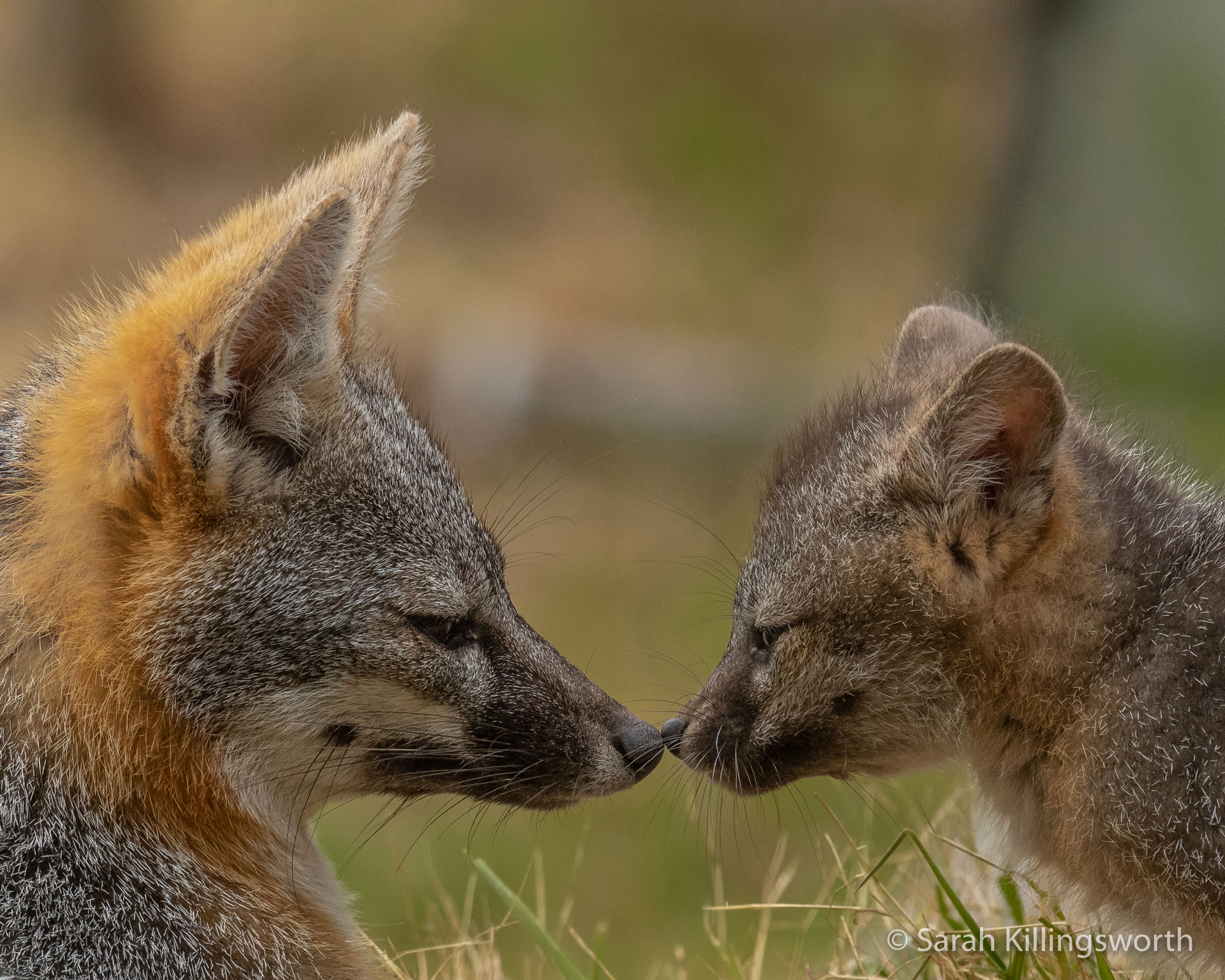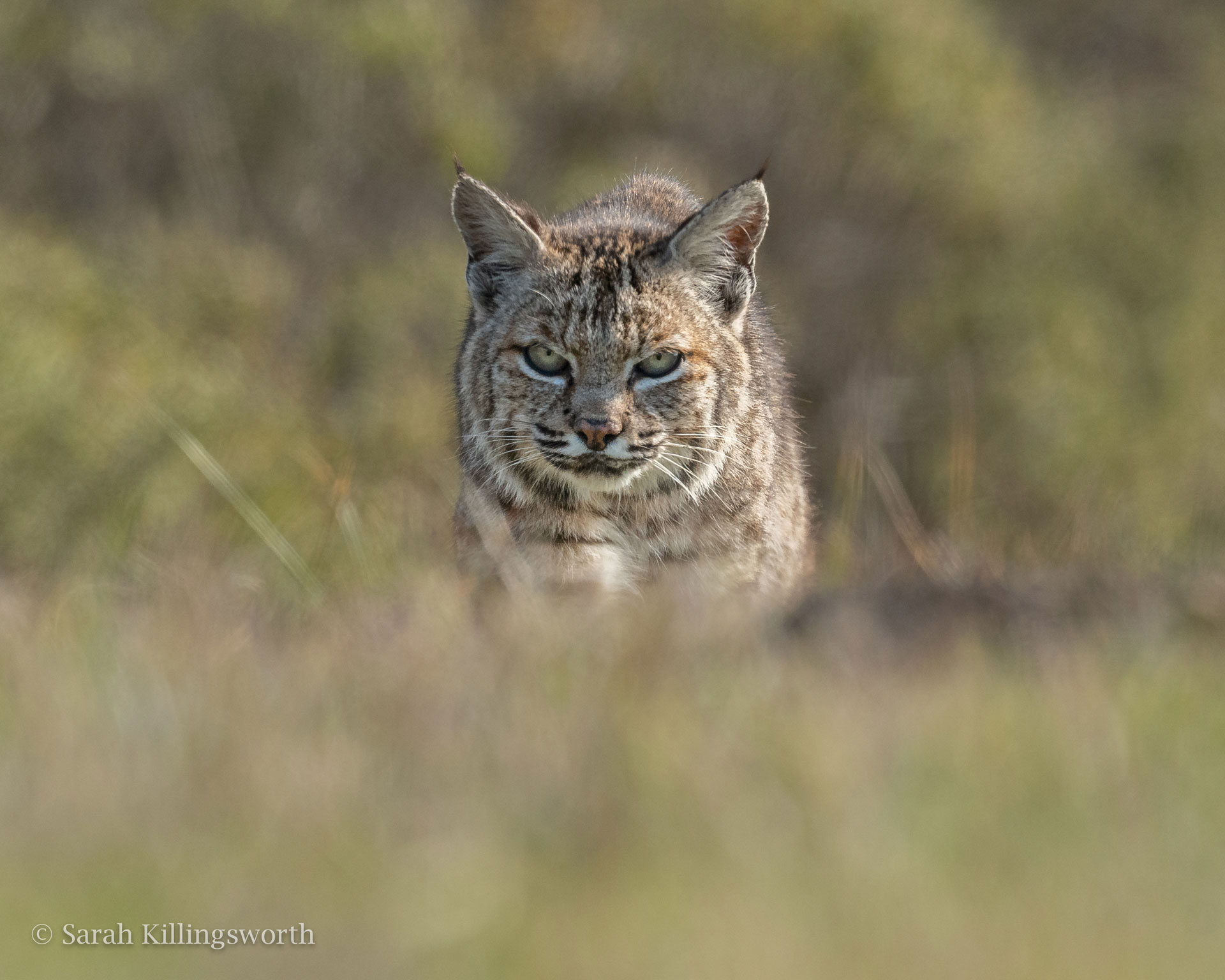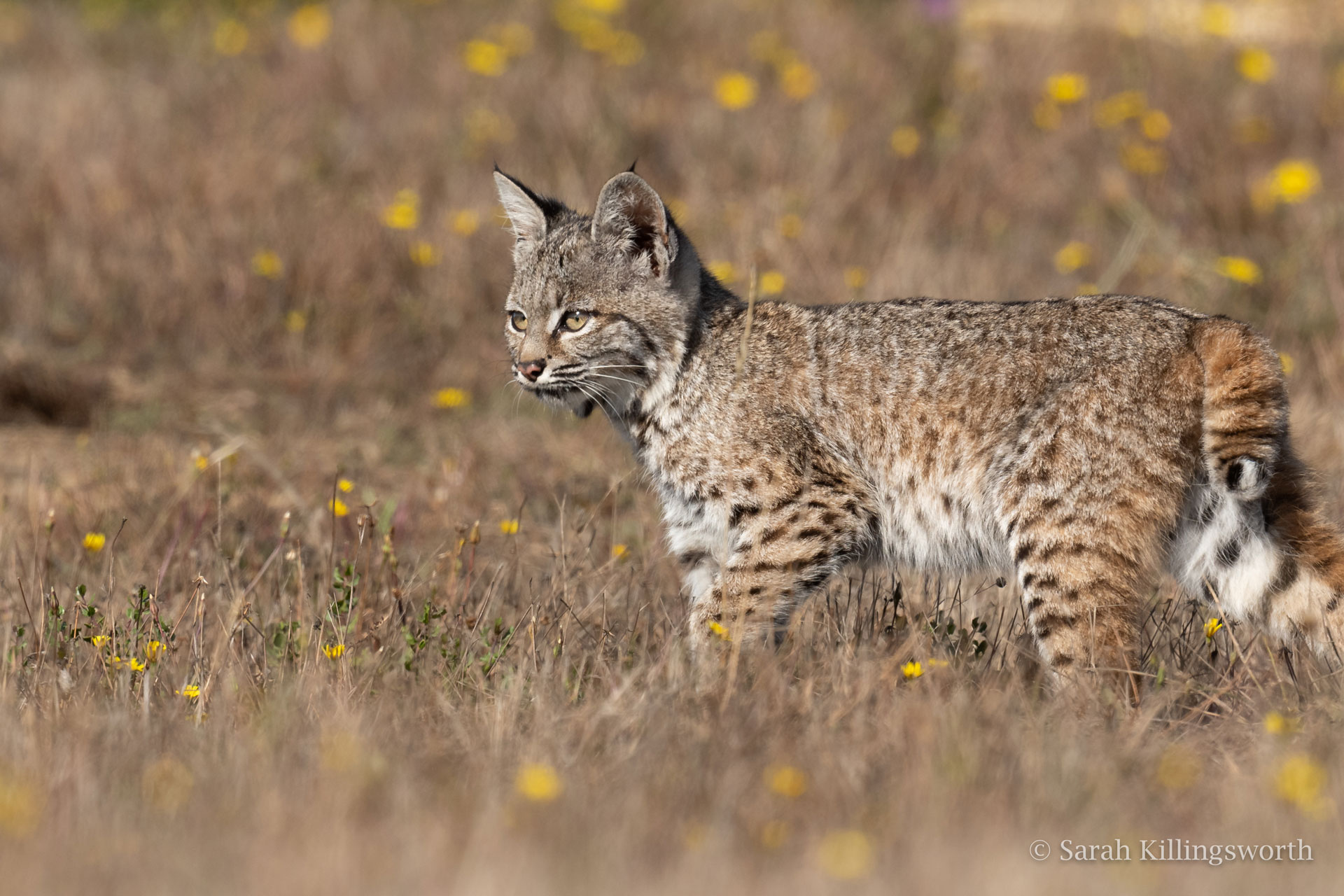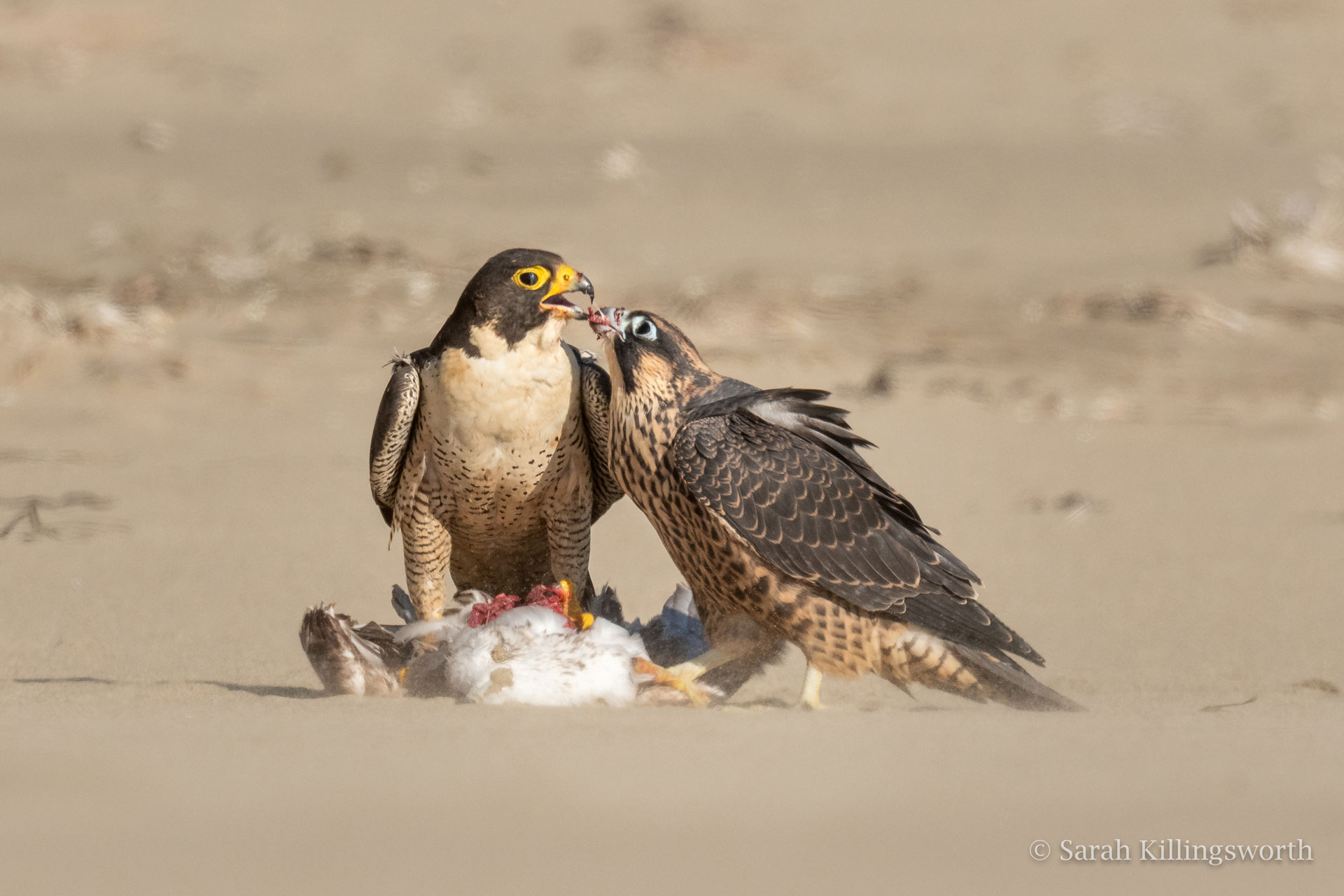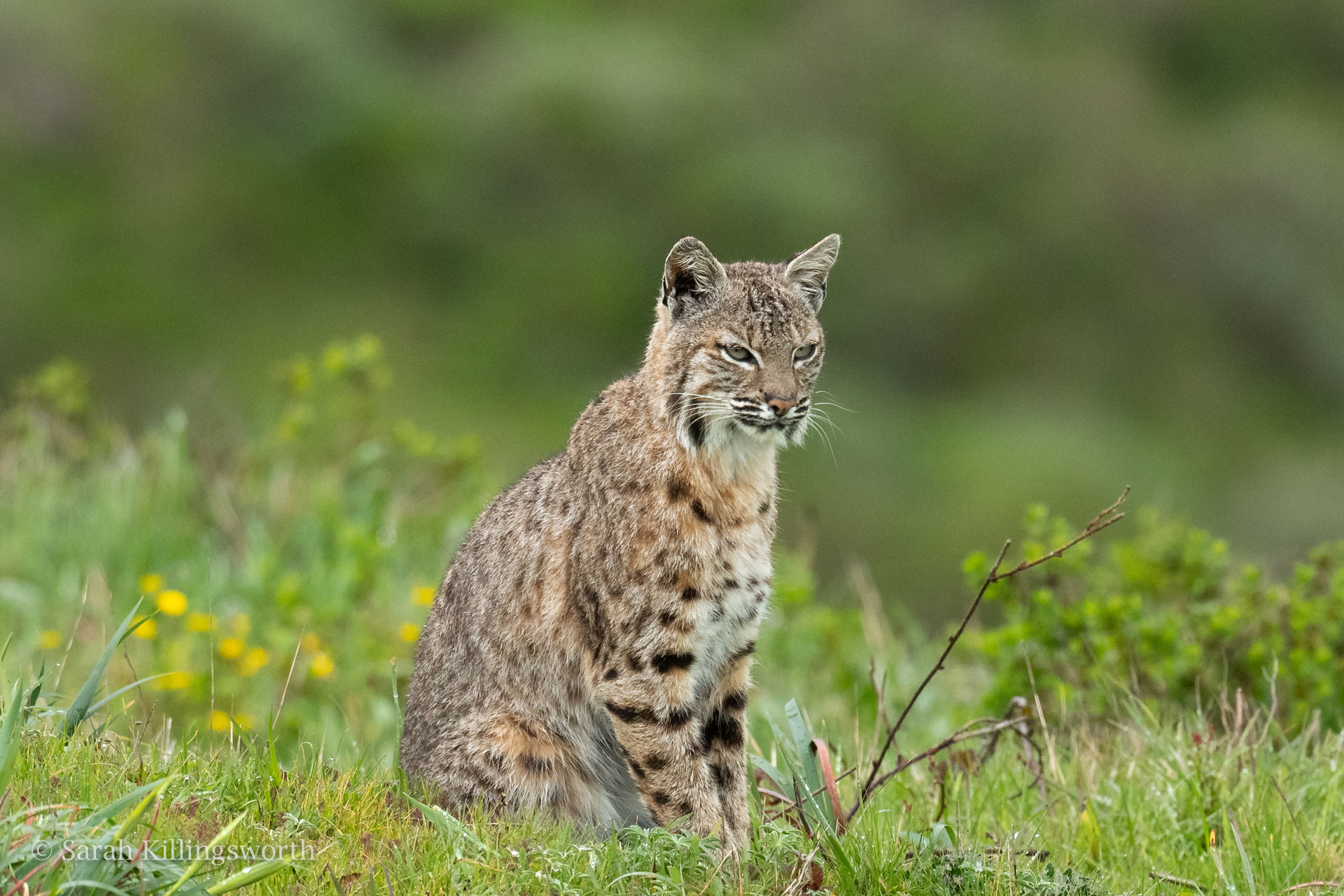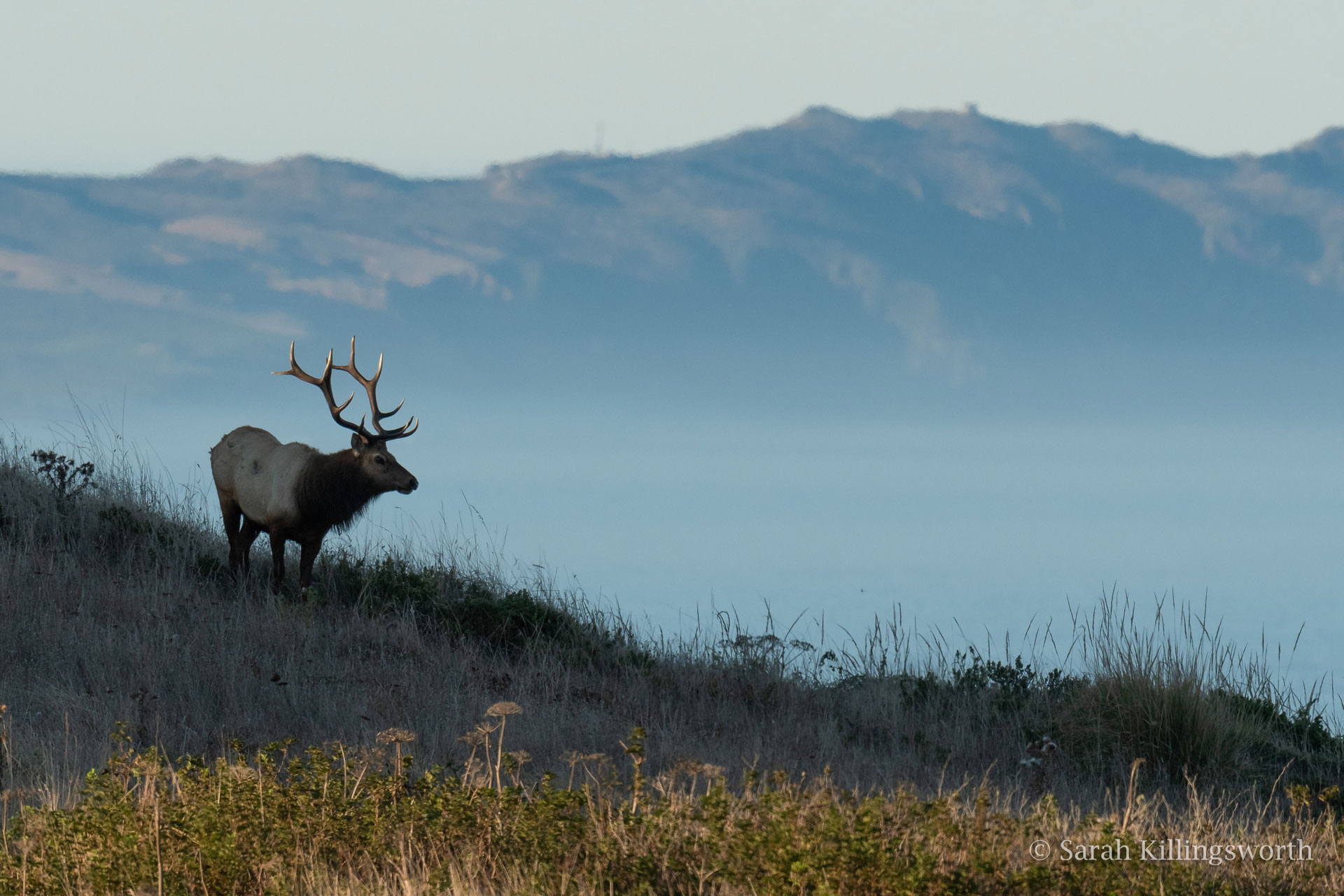Notes from the Field: Sarah Killingsworth
We’re excited to have Sarah Killingsworth join our growing pack of Wildlife Educators!
Sarah has extensive knowledge and experience in the fields of wildlife and education. As a mother of two and a full-time practicing attorney with her own law firm in Marin County, CA, the fact that she finds time to volunteer for causes she believes in while also honing her abundant skills as a wildlife photographer never ceases to amaze me. Within the first week of coming on board at Project Coyote, Sarah had formulated brilliant ideas about how to expand our Keeping It Wild program by, among other things, developing targeted curricula and resources for educators wanting to include wildlife and conservation issues in their teaching plans.
I thank Project Coyote Ambassador Daniel Dietrich for introducing Sarah to us, and I am enormously grateful that she has chosen Project Coyote as a beneficiary of her skills, expertise and energy. We are very lucky to count Sarah as a member of our pack.
I hope you’ll enjoy this interview with Sarah, and that you’ll check out her website highlighting her exquisite wildlife photography. Sarah will also present a free webinar about bobcats on August 27th at 4pm PT ~ register here, and stay tuned for more details coming soon!
For the Wild Ones,
Camilla Fox
Founder & Executive Director
You recently joined Project Coyote as a Wildlife Educator. Can you share a bit about your background in education, law, and wildlife conservation, and how you bring those skills and interests to Project Coyote?
I am an attorney, but have always been passionate about education and wildlife. As a child, I wanted to be a kindergarten teacher, like my grandmother. Spending time in wilderness has always been a source of solace and rejuvenation for me. I volunteered in the Wildcare Bay Area Bird room and saw firsthand the damage humans can do to other species. As a parent, I have been an active classroom volunteer, running a variety of programs for students in elementary school. I am also an elected member of the Kentfield School Board. One of my favorite topics to discuss with kids is wildlife and nature. Students’ curiosity and enthusiasm is infectious, and they ask great questions. At the beginning of this year, I became a certified California Naturalist which gave me even more skills and knowledge to share in my classroom presentations. Being a wildlife educator with Project Coyote allows me to combine my passions in educating kids about wildlife, conservation and advocacy. It is so empowering for kids to hear things they can do in their own communities to protect wildlife.
You are an accomplished wildlife photographer, and have your own website showcasing your amazing work. Can you tell us about your experiences photographing wildlife in Point Reyes, and what sparked your special interest in bobcats?
Thanks. Point Reyes National Seashore is a magical place. It is such a privilege to spend time photographing wildlife there. My wildlife photography in Point Reyes arose out of my passion for the wildlife and wanting to share the amazing experiences I had with my family and friends. Time in nature is so restorative and healing. People started telling me they were showing my photos to their children, and that they looked forward to seeing what I posted to Facebook. I love sharing the beauty of wildlife, particularly bobcats. Because bobcats are often skittish and camouflage so well, it takes an enormous amount of patience, persistence and luck to be able to photograph them well. One of the biggest mistakes I see people make with wildlife photography is walking right towards an animal after they spot it. That typically leads to shots of the back half of the animal as it runs or flies away from you. As a wildlife photographer, my goal is always to observe and document natural behavior, and not change that behavior by my presence – which means sitting back, quietly, and waiting. My passion for bobcats comes from spending time with them, witnessing their incredible patience, agility and beauty. They are such stunning muscular animals, filled with intensity while they hunt. And there is nothing cuter than bobcat kittens wrestling, playing and learning to hunt. Watching a bobcat mother raise her young has been a highlight of wildlife photography for me.
You’ve studied bobcats out in the wild on multiple occasions. What are some of the aspects of this wild cat that most surprise and delight you?
I have been amazed by how long a bobcat will sit, watching a gopher hole, waiting for the perfect moment to strike. They can sit motionless for 20 minutes or more, with literally barely a twitch of an ear or any muscle. They are incredibly efficient, athletic hunters, with a burst of energy as they leap or lunge for prey. Bobcats’ coats are stunning, and the pattern is different on every cat, which allows me to identify individual cats when I am out in the Park. There are also regional variations in bobcats’ appearance, as they are the most widespread wild cat species in North America. Their coat provides such amazing camouflage – when they lie flat in tall grass they literally disappear. I have spent many hours with bobcats napping or grooming, and it always amuses me to see that they groom the same way a domestic cat does, washing their face by licking their paw and rubbing it in a circular motion on their face. I have been lucky enough to spend time with a bobcat mother and her young, and seeing the mother nuzzle and groom her kittens is beyond a delight. They are such devoted mothers, and protective of their young. Via trail cam footage, I have also seen that kittens keep their moms up all night with shenanigans running in and out of the den! Bobcat mothers have less than a year to teach the kittens the skills they need to survive – an amazing process to watch as kittens play, learn to hunt, and learn what places are safe vs. sources of danger.
What do you think are some of the significant threats that bobcats face today?
Without a doubt, the biggest threat to bobcats and other predators is humans, particularly our continued, widespread use of anticoagulant rodenticides. Bobcats eat prey that have consumed the rodenticide, and it then poisons the bobcats. It may not be enough to kill the bobcat immediately, but cumulative consumption changes the bobcat’s immune system, making them more vulnerable to disease, particularly mange. Many people don’t realize that putting out poison for mice, rats and gophers kills predators like bobcats as well as raptors. We have an amazing array of natural sources of rodent control, and allowing foxes, coyotes, bobcats, hawks and owls to take care of rodents naturally is far better for the entire ecosystem. Anticoagulant rodenticides cannot be purchased by individuals in California, but pest control companies can still use them. One way to help bobcats and other wildlife is to not purchase rodenticides or hire companies who use them.
Territory loss and hunting are the other major threats to bobcats – our roads, fences, traffic, hunting and wildlife killing contests all place bobcats in peril. I am so grateful for Project Coyote’s tireless work to protect predators from hunting, trapping, anticoagulant rodenticides and killing contests – with amazing success in California and elsewhere. But there are many, many places where bobcats remain unprotected, and where they are poisoned and hunted without any limit and killed for money and prizes.
You’ve given many public presentations and done extensive outreach about bobcats. What are some of the misconceptions that people have about these animals?
Many people mistake bobcats for mountain lions, and think they are a danger to humans. They aren’t. Bobcats are much smaller than mountain lions – on average just 15-20 pounds – and far more afraid of people. They tend to disappear before most people ever even see them. People think they are rare, but they are actually widespread, with an amazing ability to camouflage and stay hidden. And people also think the kittens are cute and decide to feed them or try to keep them as pets, with predictably disastrous results. Bobcats who have been fed when they are kittens become acclimated to people and may never develop the ability to hunt on their own. This usually ends with either the bobcat being euthanized or being kept as an ambassador animal at a wildlife rescue facility as it cannot survive in the wild. People are literally killing bobcats with misplaced “kindness” by feeding them.
Do you think wildlife photography and photographers can help promote compassionate conservation and coexistence?
Absolutely – a while back, I took a photo of a sea lion on a beach that had been shot. That one photo was picked up across the country and went viral, which brought home to me personally the power of wildlife photography to educate people and promote conservation and prompted me to start using my photos for educational programs and to become an active volunteer with Project Coyote and the Environmental Action Committee of West Marin, where I am a board member. Many wildlife photographers promote conservation and coexistence with their images – Project Coyote Ambassadors Daniel Dietrich and Melissa Groo are two great examples of this, and role models for me as I engage in this work. National Geographic filmmaker Filipe DeAndrade is another great example of someone whose work highlights the beauty of wildlife and our obligation to protect and preserve it. A photograph or video of a wild animal provides such a direct emotional connection to the species. And often insight into animal behavior that people otherwise would never see. That emotional reaction is what motivates people to get involved, to work for conservation. As Senegalese poet and naturalist Baba Dioum wisely said, “In the end, we will conserve only what we love.” I hope my photography inspires a love for wildlife, and therefore a desire to protect it.
As a wildlife educator with two boys in middle school, how do you think we best counter nature deficit disorder in youth?
Nature-deficit disorder – the behavioral changes and human costs of alienation resulting from a dearth of time spent in nature or a lack of understanding/experience of the natural world – is a true challenge in our device-filled world. So many kids spend hours on their phones, computers and gaming devices. And so little time outdoors. It is critical for children to spend unstructured time outside, just exploring and playing. Even locally in Marin, it is amazing to me how many children have never visited Point Reyes National Seashore. Sometimes a class field trip is their first experience of this local park. I would love to see every student at every grade level have at least one wilderness/wildlife field trip per school year. With COVID-19, the education landscape has shifted dramatically, so even though time outside is still one of the safest activities for teachers and students alike, it will likely be another year before field trips return to the way we knew them in the past. Distance learning does provide the opportunity for students to spend more time outside, which has mental health benefits as well as educational benefits. Limiting screen time and letting children play at the beach, the park or in the woods is the best way to counter nature-deficit disorder. Having an adult with them, to help identify plants and animals they notice, is terrific too. And kids love using a pair of binoculars or a camera to zoom in on what they see. Kids are naturally curious, so simply exposing them to more time in nature can spark an interest. After spending lots of time with me watching hummingbirds in our yard and looking for their nest during Shelter in Place, my son picked hummingbirds for his Spring science report. I was thrilled that he chose to research something he’d been able to observe firsthand.
Have you noticed any changes in the last few months in how people and wildlife interact that might be attributable to the pandemic and the resulting lifestyle modifications we’re all experiencing?
Definitely. The Shelter in Place Orders were difficult for many people, including myself, because we took for granted our ability to drive into a park and hike and photograph wildlife. When we were limited to only visiting parks we could walk or bike into, I began biking into Point Reyes National Seashore, and more or less had the place to myself. Interestingly, animals like coyotes and bobcats were less visible than they normally were, but elusive species like badgers and long-tailed weasels were more visible. Probably a sign of which species are more acclimated to human traffic in their territories. Interestingly, we saw a bobcat in our backyard for the first time during shelter in place. And the pandemic forced all of us to slow down. To notice and appreciate the beauty of our yards and neighborhoods. There is wildlife everywhere – even in urban environments. I took thousands of photos of the hummingbirds in our neighborhood. The inequity in the shutdown, however, was that people who did not live close to a park had no way of spending time in the wilderness. In times of stress, we all benefit from the restoration of equilibrium that time in nature can provide. It was heartbreaking to think of the many people in urban environments, apartments, etc. who had little to no access to green space. But observation of wildlife in urban areas went way up, which raised awareness and appreciation for our wild neighbors. And hopefully will help promote compassionate coexistence. The power of wildlife photography and film is that it makes wild nature accessible to everyone.

